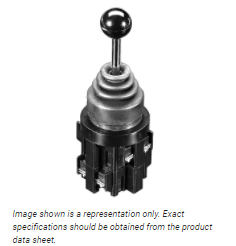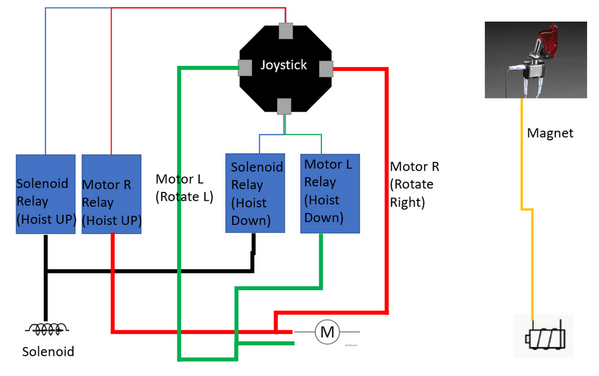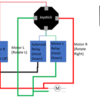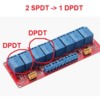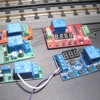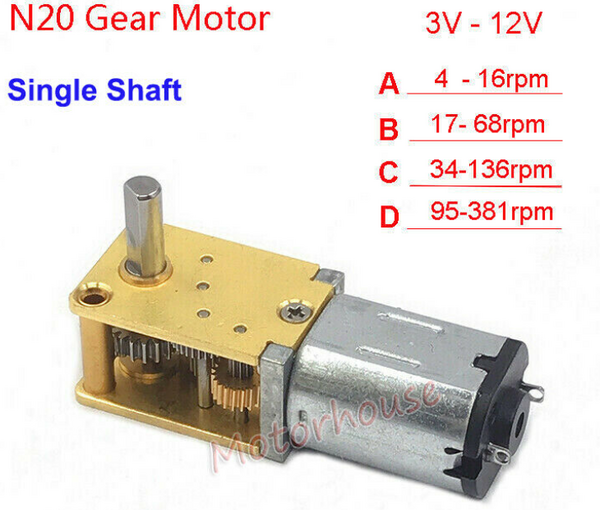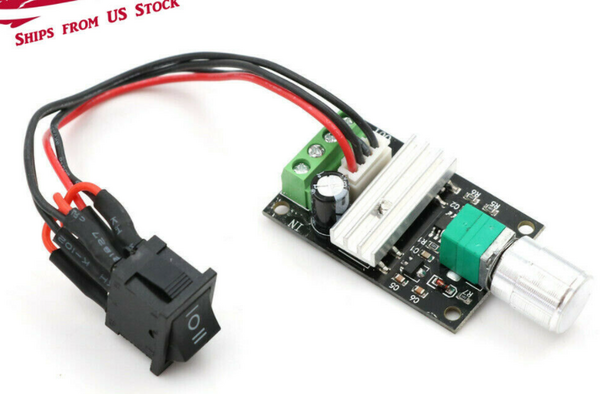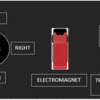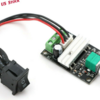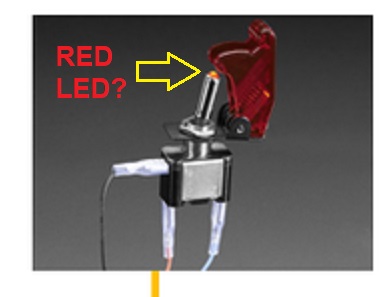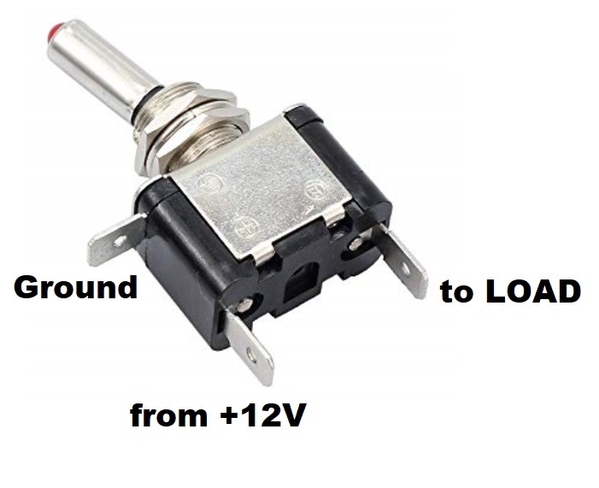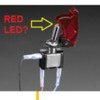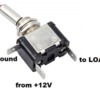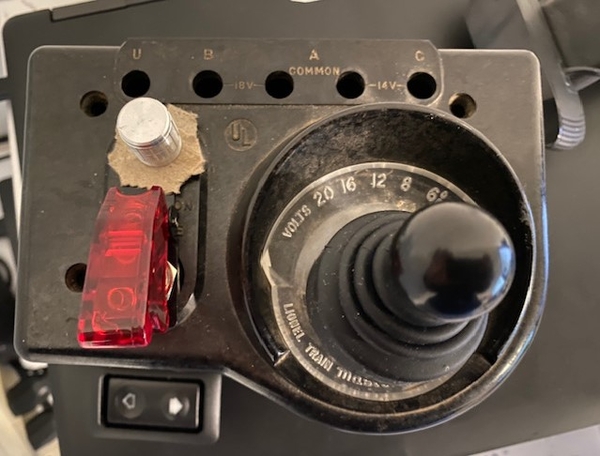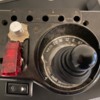Given the insanely low per-relay cost of these multi-channel 12V DC relay modules, note that you can simply pair up 2 SPDT relays to "make" a DPDT relay. So on the input/trigger side you simply are turning on (or off) two relays at once. And if all you need is a DPST relay, then it's not like there's any cost penalty when relays are less than a buck!
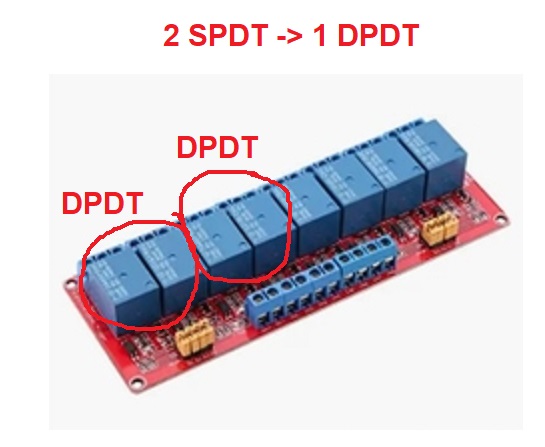
I have nothing to contribute as to the need (or not) for a delay between activating or de-activating a relay for the purposes of crane control.
In general, there a two basic types of low-cost 12V DC delay relay module, Delay ON and Delay OFF. Again, these are a couple bucks a piece and widely available.
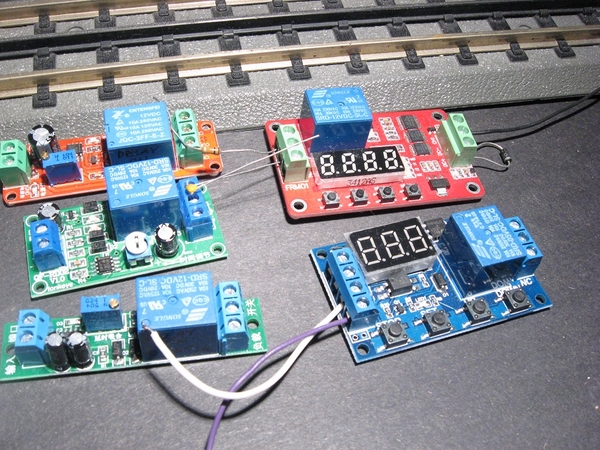
The lowest cost modules use a screwdriver delay adjustment as on the left in photo above. A Delay ON module will wait some settable delay following application of 12V DC before the relay turns ON....hence the "Delay ON" name. A Delay OFF module will immediately turn ON upon application of 12V DC, then some settable delay before the relay turns OFF...hence the "Delay OFF" name. For a few bucks more, say, $5-10 you can get delay modules that have all manners of time delay functions with digital precision as on the right in photo above. So you can set the delay to exactly 0.3 seconds, or 0.4 seconds, and so on.
I can't recall needing a delay relay that delays both when turning on AND when turning off. I wouldn't be surprised if such an animal exists but just haven't looked. My first inclination if such a function is under consideration would be to cascade or pair-up two or more regular delay relay modules to cobble together that dual delay functionality to see if that is truly what's needed.
I take it from the context of your comments that you would prefer to stay with screw-terminal-level of interconnections at the modular level versus working at the component level and soldering tiny individual parts like resistors, capacitors, and such. However, if it turns out that some configuration of delay modules is exactly what you want...but the modular level is just too bulky to fit in a suitable project box, then I should be able tell you how to convert a generic non-delay multi-relay module into one with time-delays using a handful of individual components (diodes, resistors, capacitors, etc. that are, say, 10 cents each). So the cost would be negligible but we can decide later if the DIY assembly task is worth the effort.
I guess what I'm trying to say is let's figure out what you need (I like your phrase "re-imagine") with regards to timing, delays, relays, etc.. and I am confident something can be put together to do so.




